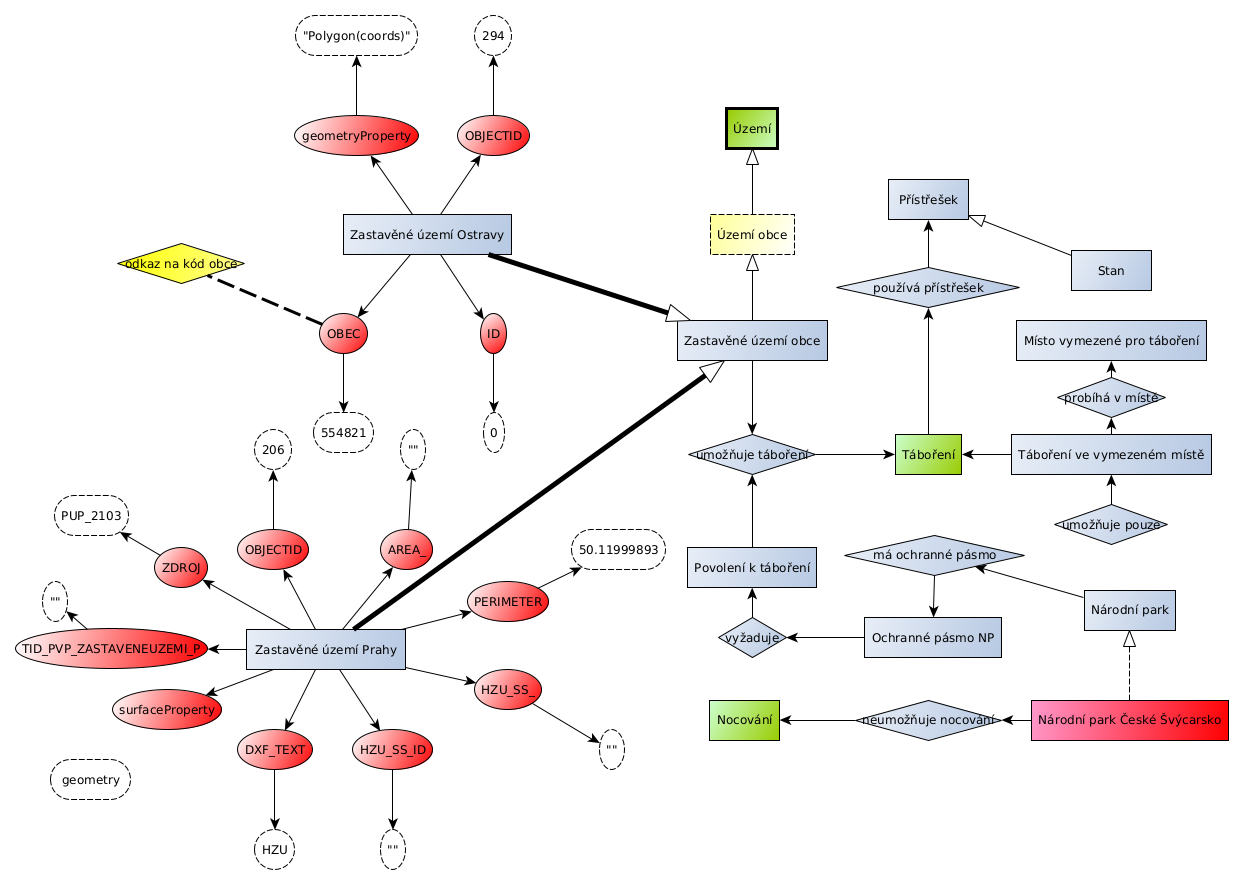Table of Contents
Checkpoint 1 (max 10 pts)
Deadline 9. 10. 2022
Goal
The goal of this checkpoint is to find the research question to be answered, build a custom conceptual model to answer the question and find relevant data sources that could help answering the question.
First two tutorials shows the introduction to sample problem and introduces the way of thinking about data as a concepts, that may be filled from various sources. Tasks in the first checkpoint focuses mainly only on those concepts.
Based on the offered topics and sample questions formulate your own question, or formulate own question in your own topic.
Topics
Questions are sorted out by the topics.
Topic Protected sites offers following questions:
- In which areas can I move outside of the marked paths (e.g. mountain biking, ski touring etc…)?
- What are the protected areas and their levels (monuments, nature) for specific municipalities? E.g. in a given radius or directly in the area of a municipality?
- What is the overlap among protected sites on various levels of administrative units (Natura 2000, birds habitation areas, national arks and other protected areas)?
- How are the conditions for development regulated by the various levels of protected areas (cultural or natural)?
- What is the relation between the level of protection and tourism?
The topic Animal species is based on the natural taxonomy of animal kingdom. We offer following questions:
- What is the nearest animal rescue station taking care of specific species?
- Which animals living in the area are not taken care of by any animal rescue station?
- Which species population had biggest growth/loss in protected areas aggregated across municipalities/regions?
- Which animal species are more endangered in municipal areas and which in wildlife (e.g. by combination of population and number of animals taken care of in animal shelters)?
Deliverable
Deliver a PDF file consisting of 1-2 pages describing
- research question to answer with detailed specification of topic, question and your motivation for the topic,
- E-R, UML or other diagram describing the knowledge needed to answer the question,
- list of datasets to be used, including source, description and model in a form of UML or E-R diagram, showing connections to the conceptual model.
On the next tutorial, everyone will tell the others the question and topic (2 mins max).
Details
Research question
Choose a research question from the list provided or come up with your own question. Consult the question with the lecturer – all proposed questions have some solution and require integration of datasets from various sources in order to answer it. Question created by students shall be equally complicated to answer and the solution shall exist. Specify the questions for specific space and time.
Conceptual model
Conceptual model represents visualization of knowledge needed to answer the question. Essential part of the task is to unambiguously define all the terms used in the conceptual model. Based on the nature of the problem, go through legislative and/or technical documents, scientific papers and define concepts in a specific meaning. Example question from the first tutorial – in which areas it is possible to legally sleep overnight in nature – is modeled in a following way:
- what is sleeping overnight in nature,
- what kind of areas do we know,
- what are the restrictions in those areas.

Look into the legislation (national, European), if it handles the problem somehow. Find definitions of related terms.
The outcome model shows the relations between the inputs and outputs and shows the way how to answer the question. Feel free to use various colours and frame types to express abstract classes, different sources etc. Use any conceptual language you know to represent the model, e.g. UML or E-R model.
Tutorial models were created in yED.
Data sources
Based on the model, look for the available data covering the problem. Then create a model of datasets – with objects, their attributes and relations between objects. Try to think about interconnection of concepts of datasets to the concepts in the conceptual model. It may happen that some of the datasets contain crucial information that does not correspond to the conceptual model. Feel free to update model, but keep in mind, that conceptual model and model of datasets are at two different levels of modelling (as seen in the picture, where thick lines represent mapping between dataset models objects to the concept of conceptual model).
Describe datasets in the output document and include the standalone dataset schema diagrams. Describe in text, how does it correspond to the classes in the conceptual model. Focus on the information needed to answer your question, i.e. interconnecting the data to get the specific knowledge. Super rich data are not useful for you without that one piece of information you need.
Some data are published only regionally. Try to look for other data providing same or similar knowledge. It may be needed to combine more datasets to complete the knowledge over larger area.
